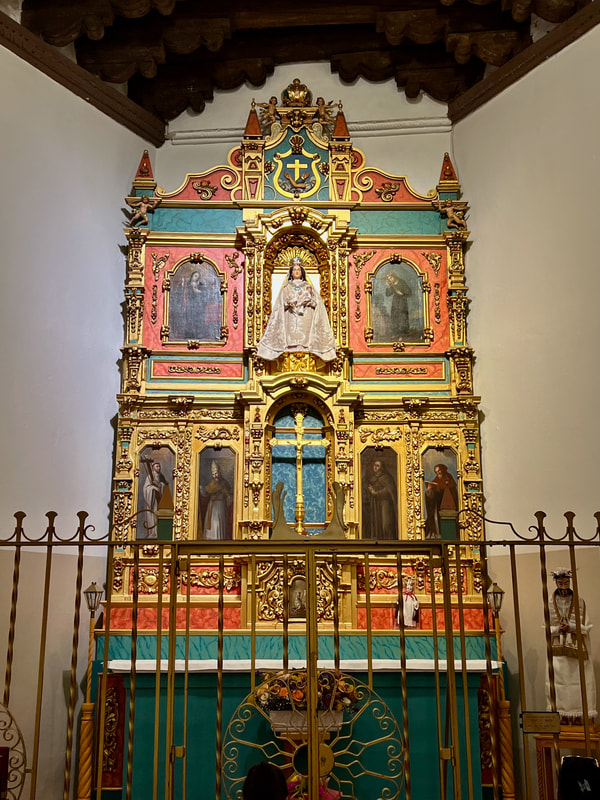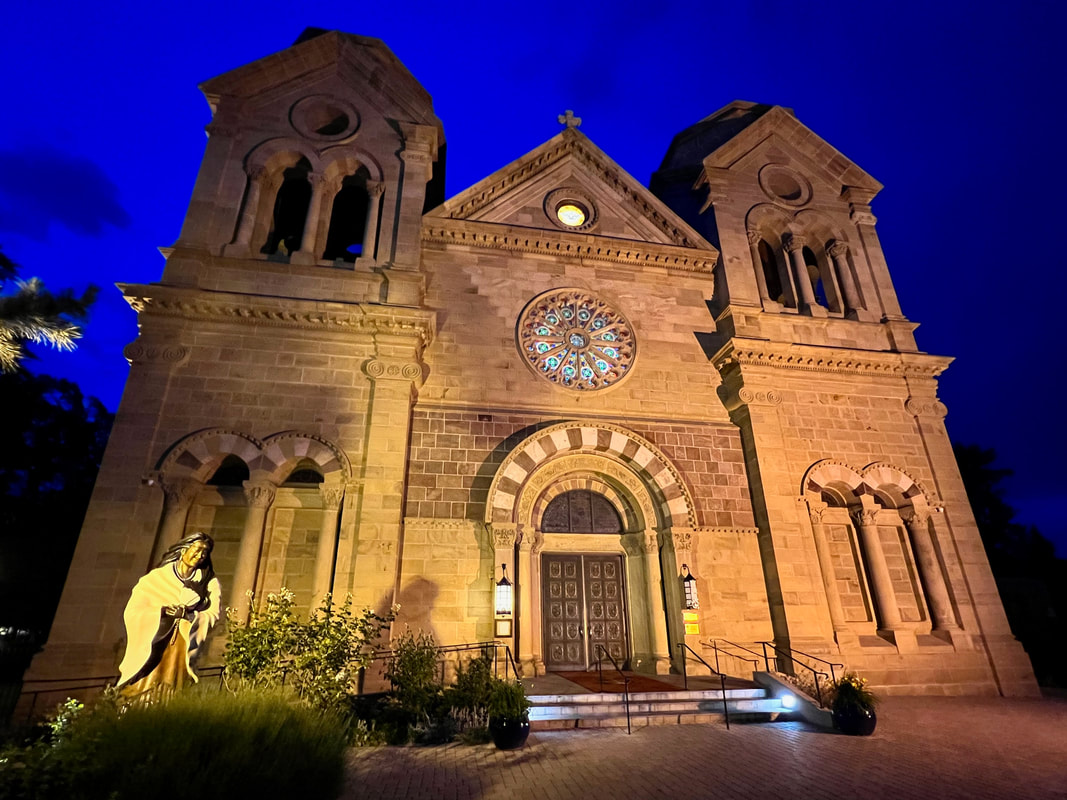|
When the Spanish reconquered New Mexico in 1692, 12 years after being driven out by pueblo Indians, it was not conquistadores who led the way. It was La Conquistadora.
She is Mary, the Blessed Mother of Christ, and she was credited for the "bloodless reconquest" of New Mexico by her devout follower, Spanish governor Don Diego de Vargas. Although he led a 200-men army that convinced the natives to surrender, De Vargas believed that she was the one who made it the peaceful reconquest possible. He used Catholic rituals to persuade the natives that he wanted peace, and he established a feast in honor of La Conquistadora, which is still celebrated every September as the "Fiestas de Santa Fe." "She is credited with answering the prayers of the Spanish to take back New Mexico peacefully and although the reconquest was not altogether peaceful it was less conflicting than it could have been," according to an explanation posted near her altar and permanent home in the Cathedral Basilica of St. Francis of Assisi in downtown Santa Fe. |
|
|
Although De Vargas turned out not to be so peaceful, and lost respect for using violent measures to control some rebelling natives, La Conquistadora became known as "Our Lady of Peace." And while the De Vargas' statue has been removed from the adjoining "Cathedral Park," La Conquistadora's altar is still a venerable place.
Some background: There was a church here, built in 1626 and destroyed in during the Pueblo Revolt of 1680. After the Spanish returned to New Mexico, a new church called La Parroquia was build here in 1714-1717 and La Conquistadora was given her own altar when La Parroquia was completed. She has been here ever since! Amazingly, to build the current cathedral, from 1869 to 1887, all of La Parroquia was demolished, except for a portion that is still here, housing the altar of La Conquistadora. |
|
The north transept of the cathedral, to the left of the main altar, was built over and around that section of La Parroquia — a powerful illustration of how New Mexican catholics feel about their Madonna.
Her wooden statue was first brought to New Mexico in 1625 as "Our Lady of the Assumption." And she resided in Santa Fe until the Spanish took her with them when they fled from New Mexico during the Pueblo Revolt. But when they brought her back in 1693, she had answered their prayers and she returned as "La Conquistadora." Nowadays, several generations later, the descendants of those who brought her back still carry her on their shoulders. There is even a fraternal organization of men dedicated to protecting La Conquistadora, and they also honor the memory of De Vargas! They are known as the "Caballeros de Vargas." |
|
|
“La Conquistadora is celebrated and prayed to during a yearly novena held in her honor," according to the altar explanation. "On the second Sunday following Pentecost she is taking taken in procession from the Cathedral and for the next seven days resides at Rosario Chapel . . . The novena is in gratitude for her intercession in the reconquest of New Mexico by the Spanish."
|
|
Even before you enter this cathedral, you are greeted by history lessons. First, you see a statue of a Native American woman. I must admit, I was a little surprised. I didn't expect to meet a saint! And then you learn that she was the first Indian in North America to be canonized (in 2012). Although Kateri Tekakwitha (1656-1680) is surely positioned (since 2003) to make the cathedral appealing to the local Native Americans, curiously, she was not from New Mexico. She was an Algonquian-Mohawk from present-day New York State. Nevertheless, she was created by sculptor Estella Loretto, from nearby Jemez Pueblo, and draws a lot of attention outside the church.
|
|
Also, if you pay attention to the cathedral's door, your entry will be delayed for at least a few minutes. The bronze sculpture door, added in 1986, is not only a work of art (by sculptor Donna Quasthoff), but a 20-panel timeline depicting the history the Catholic Church and the Hispanic community in Santa Fe. While people kept opening the door, I kept trying to take photos of every scene. lol It was challenging! (See photos).
|
|
Next to the cathedral is "Cathedral Park," where controversy awaits. While there is a lot Hispanic history still on display there, the main feature has been removed. So what happened to the De Vargas statue? Stay tuned!
|
To read other parts of this ongoing series, click: EXPLORING NEW MEXICO












